Imagine you arrived at the island with a unique culture in every corner—Sicily captures the imagination like few other regions in Italy.
Its people and personality are a world away from the mainland. A lot of people wonder just how “Italian” Sicily is (the food is so different, as are its dialects).
But this article is going to show you that while it may be very much Italian, it’s also entirely its own world.
You’re going to experience what it’s like to visit Sicily, learn where it fits in Italy, and discover the magic that has lured people here for thousands of years.
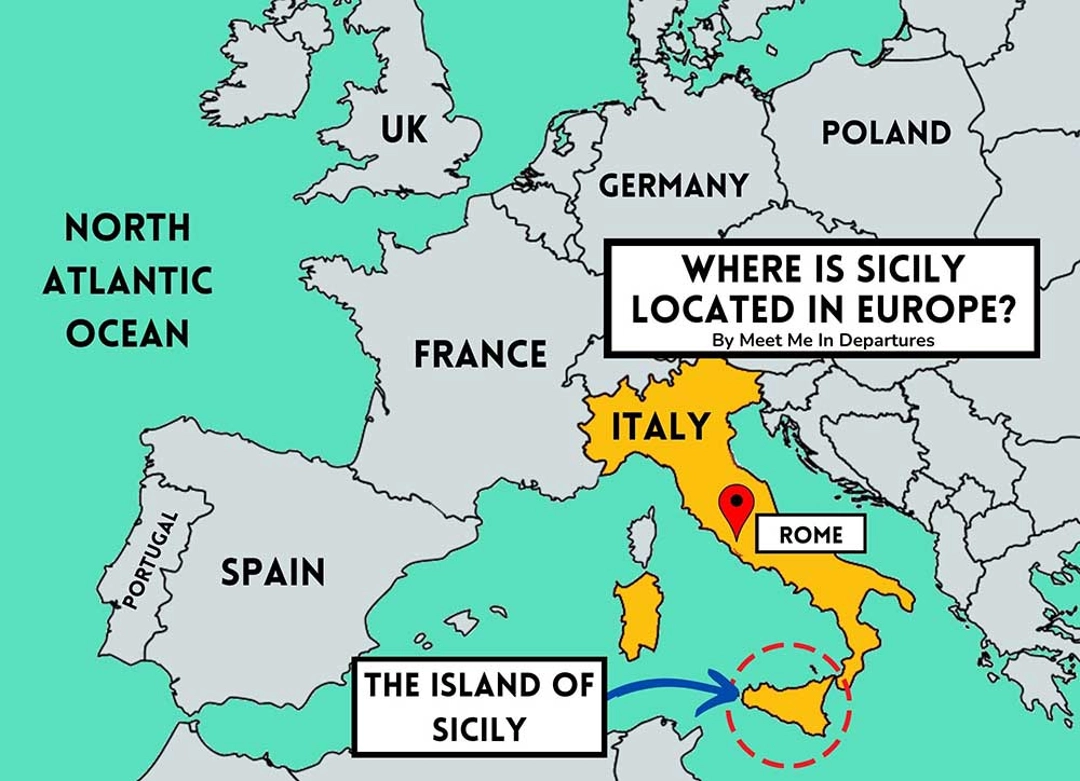
Is Sicily Part of Italy?
Yes, Sicily is part of Italy.
It’s the “toe” hanging off the boot-shaped Italian “foot.” It’s actually quite a prominent feature on Italy’s map, given that it’s the largest island in the Mediterranean and all.
Sicily is also one of the twenty regions of Italy, incorporating the same regional government structure as all the mainland regions.
It’s been that way since the region became part of Italy in the mid-19th century. While it certainly does have its own unique cultural flavor, it is, nevertheless, still part of a larger whole.
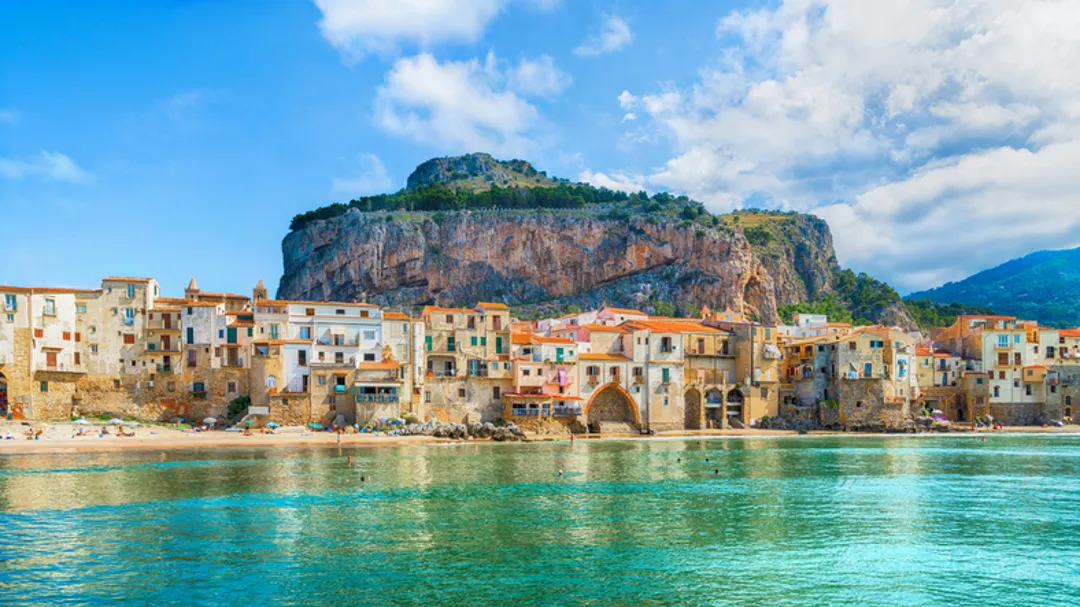
Why Sicily Feels Like a World of Its Own
Stepping foot on Sicily is like opening a door to another world.
The island’s history of cultural occupation distinguishes it within Italy the moment you arrive. Greeks, Arabs, Normans, and Spaniards all ruled the land at some point during the centuries.
The result is that Sicily feels like one of a kind. The art, the buildings, the food all feel like a wonderful fusion of all those moments, giving you a really well-rounded visit that showcases the diversity of the country in a way that not many other places do.
It’s the juxtaposition of all of those factors that carve out this little section of Italy.
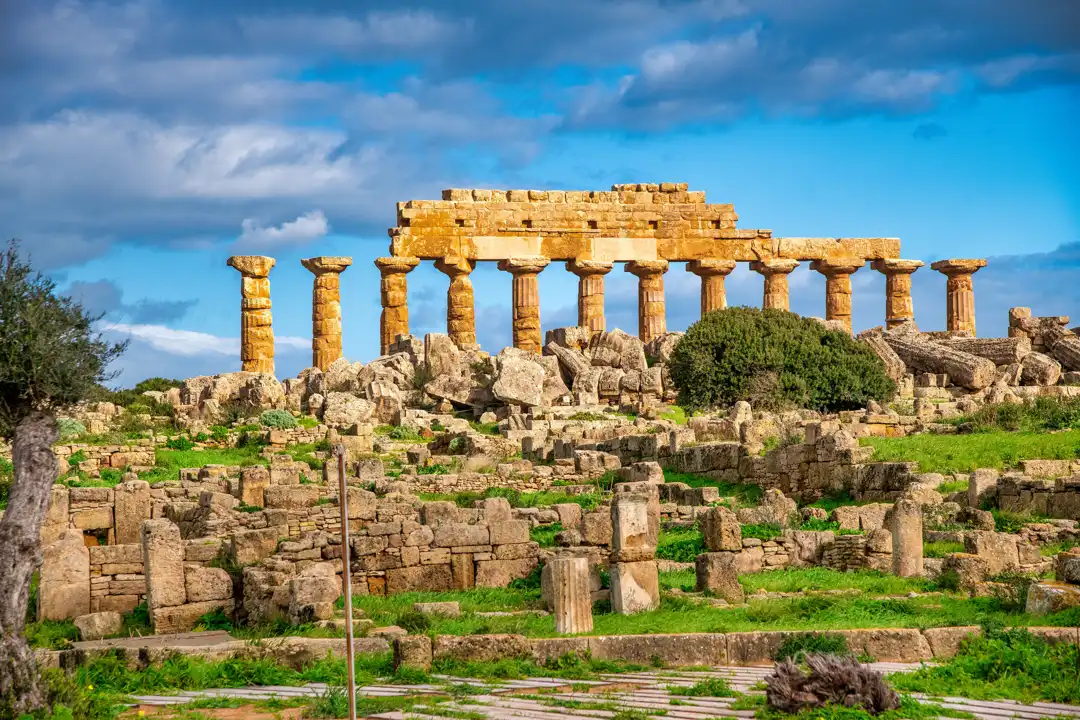
Although technically part of Italy, Sicily feels entirely its own.
From the colorful markets filled with locally-grown and locally-sourced goods to the mix of languages being spoken on the streets, everything here reflects its past as the melting pot of the Mediterranean.
You get the feeling that there’s just a different tempo of life here — one that’s impossible not to want to soak in and become a part of.
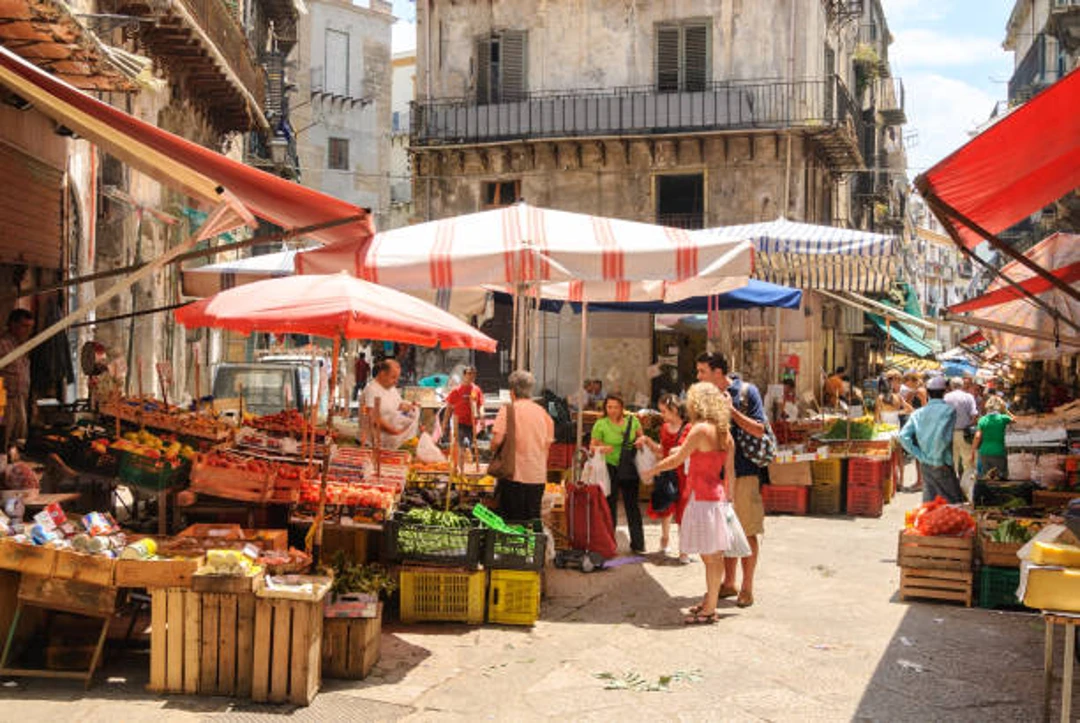
In the sections that follow, I’m going to introduce you to what makes Sicily one of the most unique places to visit in the world.
Must-Visit Places in Sicily
1. Palermo – A City of Contrasts
Sicily’s capital, Palermo is a chaotic, lively city that wears its long, complex history on its sleeve.
The streets here mix Arab domes with baroque churches, the air is sweet with the scent of oranges, and the local food is a bold mix of North African, Middle Eastern, and Italian.
Visit the stunning Palatine Chapel and try the arancina (stuffed rice ball) at Ballarò Market.
This is where the past is still openly all around you.
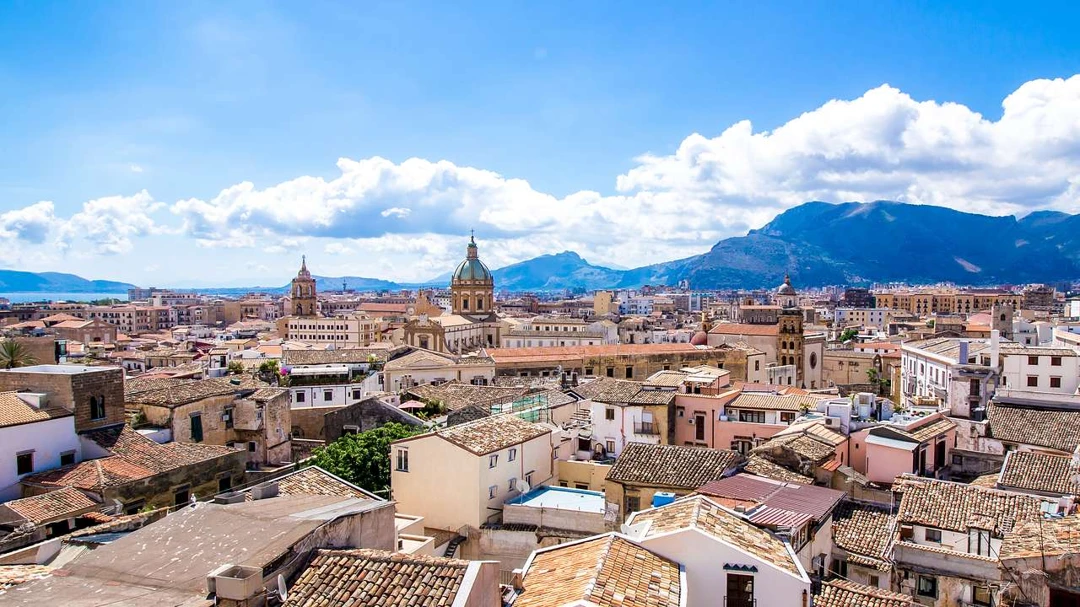
2. Taormina – Glamour with a View
Situated on a cliff, Taormina offers stunning panoramic vistas of the Ionian Sea.
The Greco-Roman theater isn’t just for show, it’s a place of history and scenery, as Mt. Etna looms in the background.
The town is lined with fancy stores and sophisticated piazzas, and it feels luxurious all around.
The home of a famous film festival, Taormina is a destination for art and elegance with views.
3. Mount Etna – Europe’s Most Active Volcan
Mount Enta is begging to be climbed.
You can hike it, take a cable car up, or go on a guided tour around its lava fields. When you stand atop Europe’s tallest active volcano, you’re surrounded by the earth’s awesome might. The mountain is lined with vineyards, which produce the local Etna Rosso wine.
This isn’t just a visit — it’s a taste of nature and local flavor at the same time.
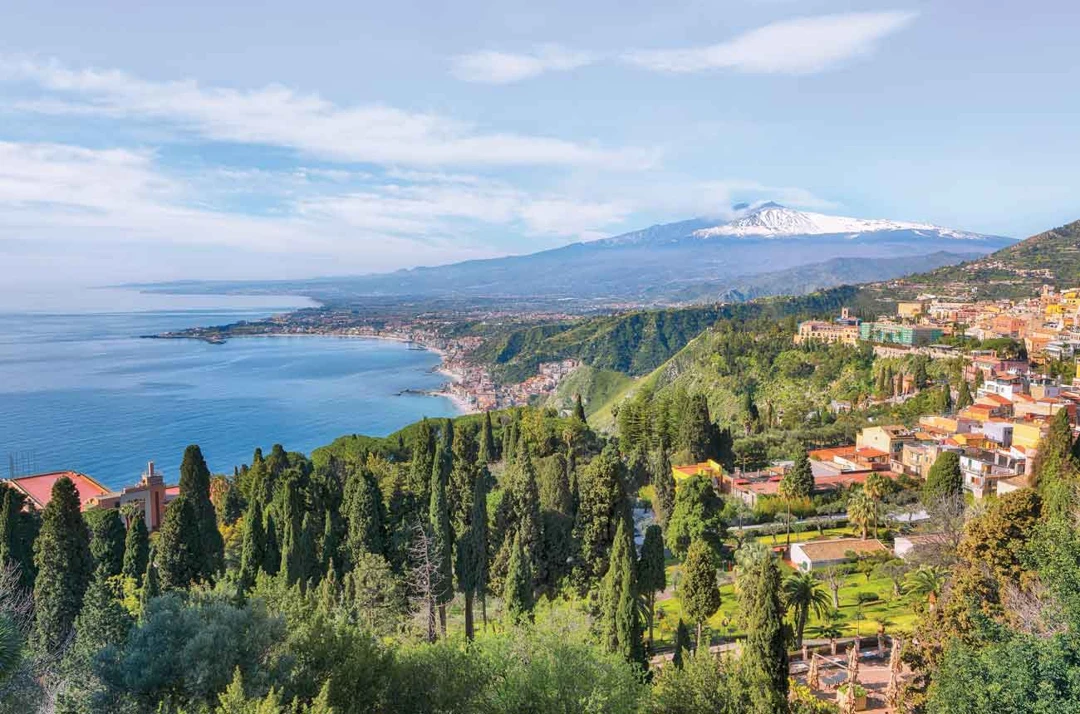
4. The Valley of the Temples – Greek History in Agrigento
Within the Valley of the Temples, you’ll find some of the best-preserved ancient Greek buildings not located in Greece.
When bathed in golden light at sunset, these ruins are simply magical, and enjoying them without crowds is an enchanting, tranquil experience.
Archaeology guides offer you the opportunity to learn more about the history behind these giant stones.
5. Cefalù – A Postcard-Perfect Beach Town
Cefalù is the quintessential Sicilian beach town, complete with golden beaches and a medieval-tinged old town.
Its Norman cathedral is a historic site that’s as picturesque as the surrounding views. It’s a place where you go to nap, eat seaside meals, or take that postcard picture.
So whether you’re toasting on the beach or meandering medieval streets, Cefalù has the vibe of both beauty and bliss.
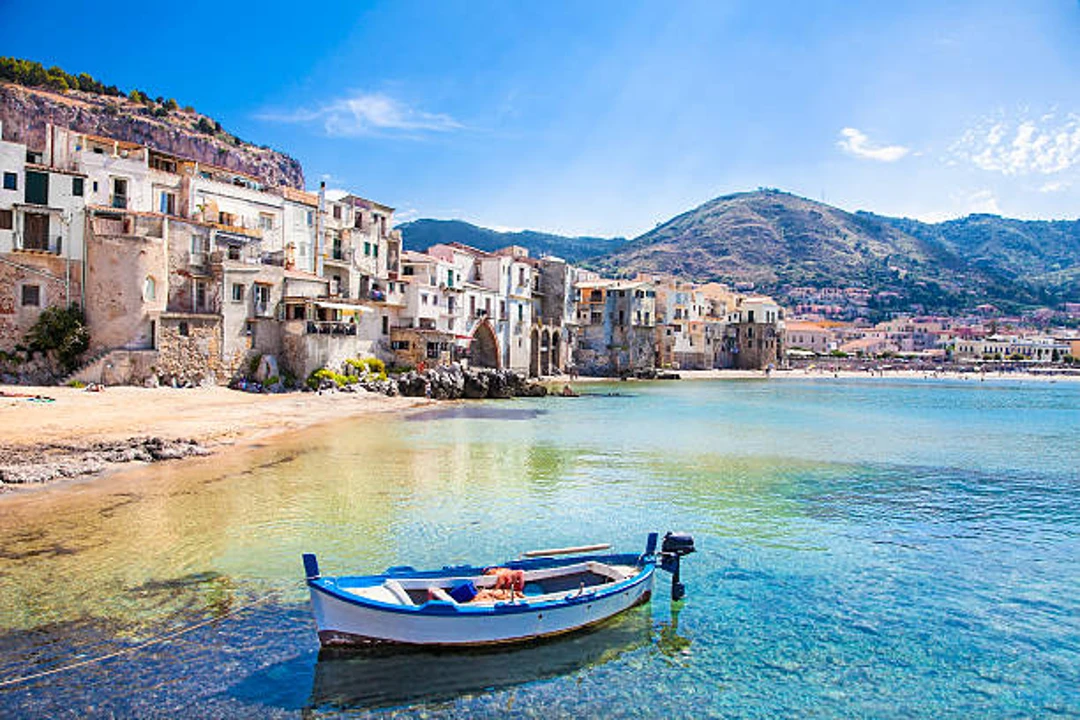
6. Syracuse & Ortigia – Ancient Wonders by the Sea
Syracuse wants you to explore its Greek past, while Ortigia is an exotic, romantic island filled with narrow alleyways and lively squares.
Don’t miss the Fountain of Arethusa, as it’s a place where history blends with nature.
The evening passeggiata is a scene—energetic and same in the sea air— reflecting the whole spirit of Sicily on this one walk.
Tasted Food of Sicily
1. Arancini – Crispy, Golden Rice Balls
Meet Arancini, a popular Sicilian street food.
They are round, breaded and fried rice balls, often filled with ragù, mozzarella cheese, and even pistachios. Imagine chewing on a crispy, golden shell and enjoying the hot, tasty center inside — that’s what Arancini is.
You’ll be able to purchase them from street vendors in bustling towns, such as Catania and Palermo.
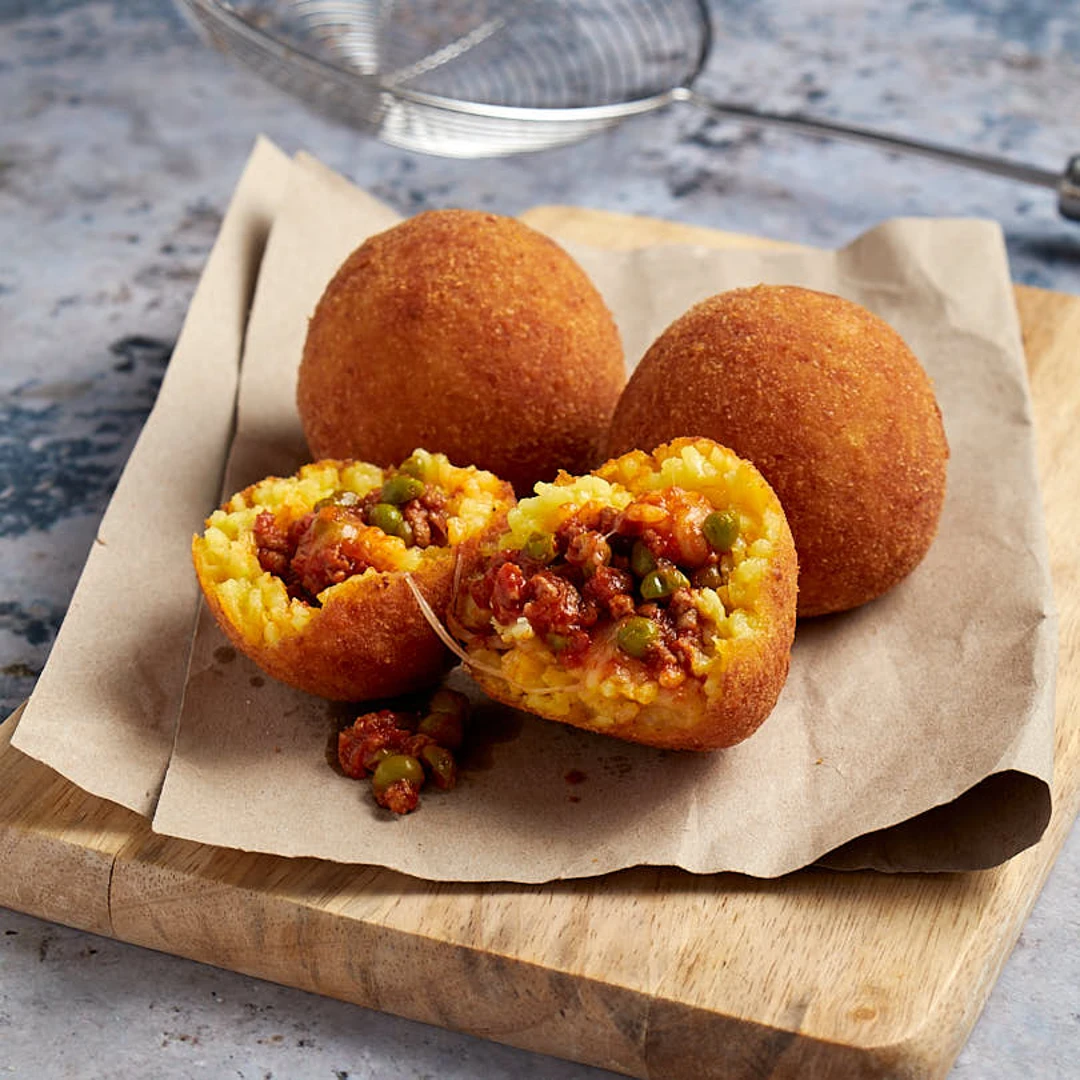
2. Pasta alla Norma – A Tribute to Catania
Pasta alla Norma is a wonderful dish that just screams Catania.
It consists of tomatoes, fried eggplant, ricotta salata, and basil. Interestingly, it’s named after Bellini’s opera “Norma”!
Rich in flavor and texture, every bite of it almost feels like a love song to Catania and its culinary prowess.
3. Cannoli – The Sweetest Symbol of Sicily
Cannoli are Sicily’s and one of the best treats in the world.
They come in all sorts of flavor variations in every region so they make for a popular, tasty treat no matter where you are visiting.
It’s not a snack, but a way of life!
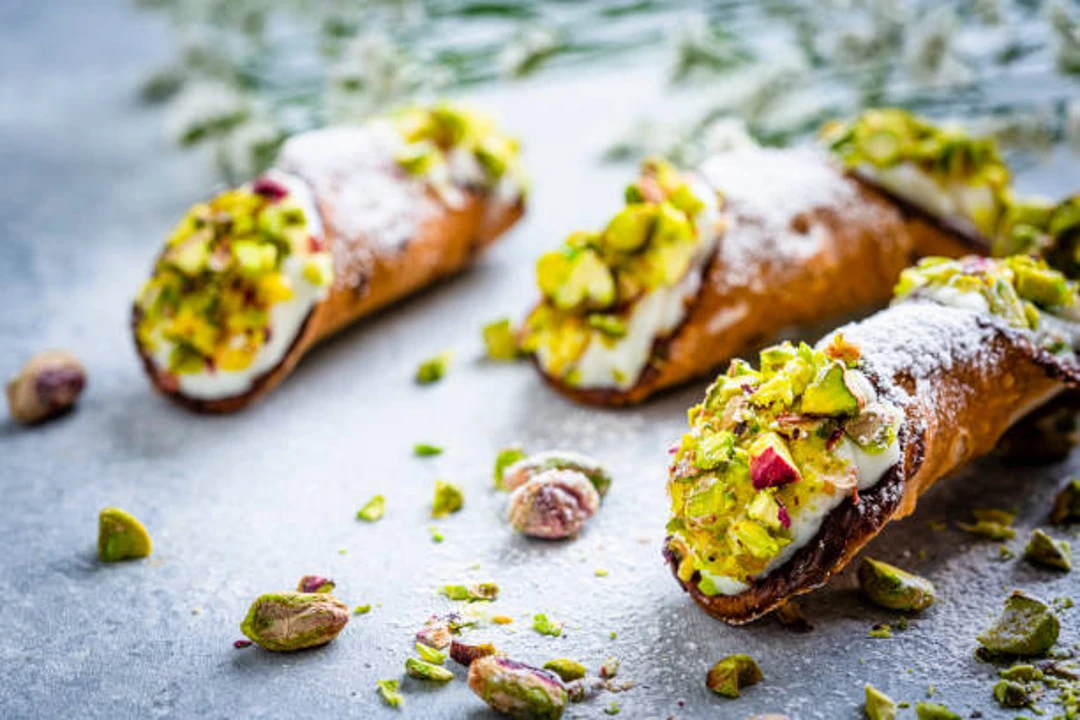
4. Sicilian Granita – Icy Delight for Summer Days
Don’t leave Sicily without trying Sicilian Granita.
This refreshing treat is almost like a slushie and can be found in lemon, almond, and coffee flavors (though other varieties are also common).
It’s frequently served with a soft brioche bun, and is actually a popular breakfast in eastern Sicily.
It’s a scrumptious and cool way to begin the day on a warm note.
5. Local Wines – From Etna to Marsala
Sicilian wines will take you on a journey around the island.
From volcanic wine in Etna Rosso, to the intense fortified wine in Marsala, you’ll find wine here to be both exciting and varied.
To enjoy the full experience, visit some of the wineries that open their doors for day visits and tastings.
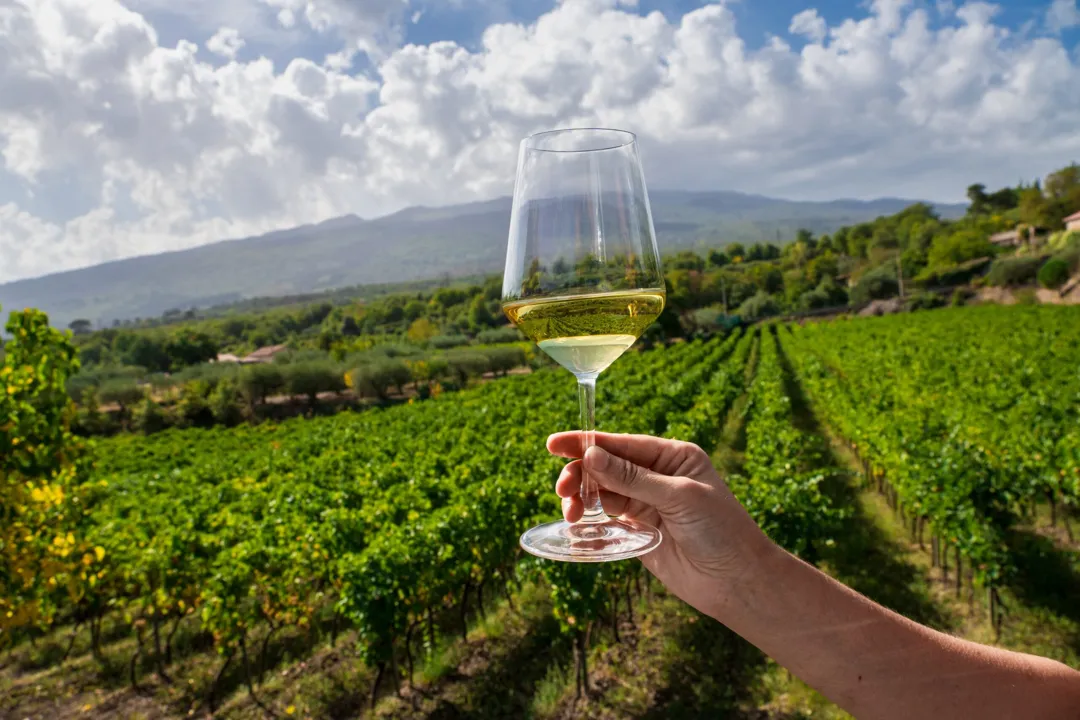
Sicilian Culture and Local Life
Markets
Markets in Sicily are truly vibrant hubs of local life, bursting with color, sounds, and delicious aromas.
You’ll find everything from fresh produce and fragrant spices to handmade crafts and traditional Sicilian delicacies.
The energy is palpable as vendors shout their prices and locals haggle in lively conversations.
Don’t miss the famous fish market in Catania, where the catch of the day is displayed in a dazzling array of shapes and colors — it’s an authentic glimpse into the daily rhythm of Sicilian life.
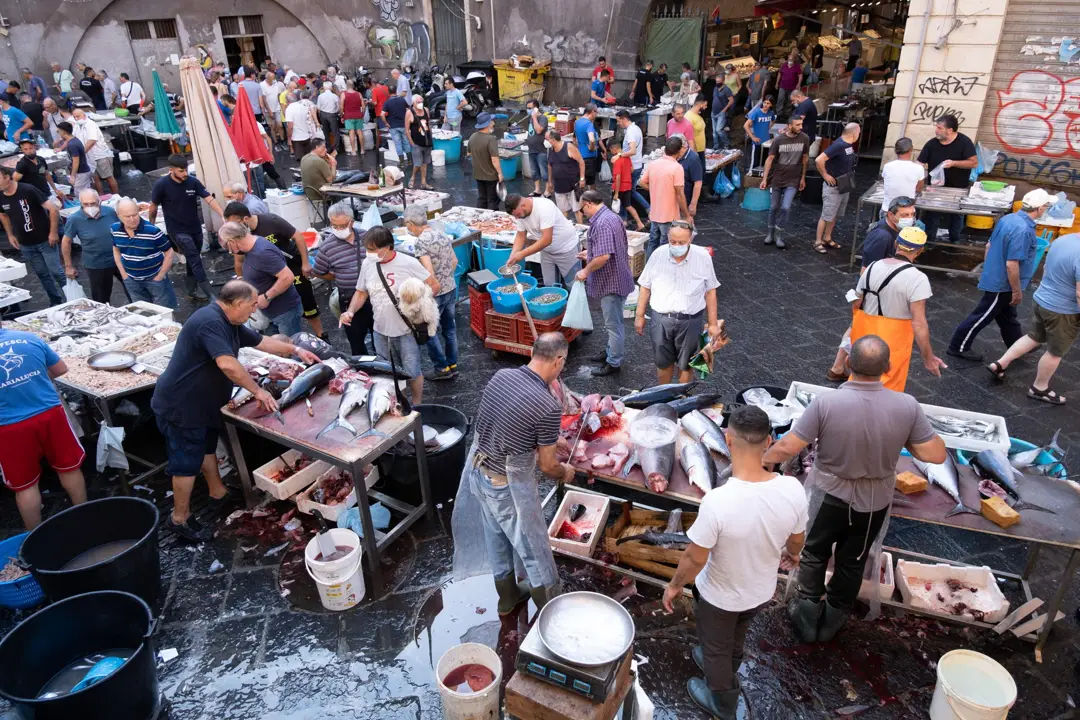
Festivals
Sicily’s rich culture shines brightest during its festivals, which are deeply rooted in tradition and community spirit.
One of the most famous is Catania’s Feast of Santa Agata, a grand three-day celebration honoring the city’s patron saint, filled with religious processions, music, and fireworks that light up the night sky.
Meanwhile, in Noto, the Infiorata festival transforms the streets into a breathtaking canvas of floral carpets, where intricate designs made from petals celebrate the arrival of spring.
These festivals provide a unique chance to experience Sicily’s vibrant heritage and warm hospitality firsthand.
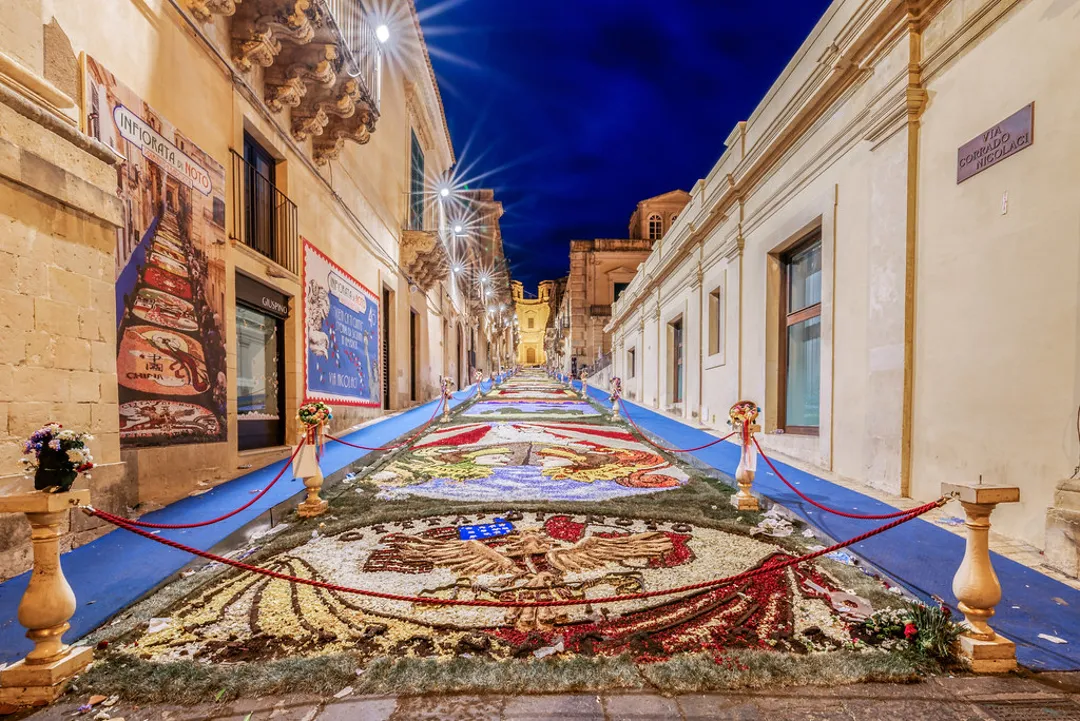
Daily Rhythms & Customs
Life in Sicily is lived at a leisurely pace and you’re encouraged to take it slow and make the most of everything.
Family, food, and tradition are all key and everything is centered around these three.
Afternoons are a time for a light nap (they call it a siesta) and things often close after lunch to reopen in the early evening. The passeggiata is a stroll taken in the evening where locals walk the streets to see and be seen. Dinners here are a celebration too.
They can last hours and are full of laughter, stories, and course upon course of food. Life is about living to the fullest.
Travel Tips
Going to Sicily is an adventure. Here’s 7 things you should know before you go:
Dress Comfortably. Pack light clothes for the heat, but carry a jacket since evenings can get cooler, especially in coastal areas.
Rent a Car. If you love exploring off-the-beaten-path places, renting a car is a great option for flexibility.
Cultural Etiquette. Dress modestly, especially when visiting churches or sacred sites, to show respect.
Avoid Noon Heat. Plan to visit attractions early in the morning or later in the afternoon to beat the heat.
Respect Siesta Time. Understand that many shops close in the early afternoon and reopen later.
Sun Protection. Wear sunscreen, a hat, and sunglasses to protect against strong sun exposure.
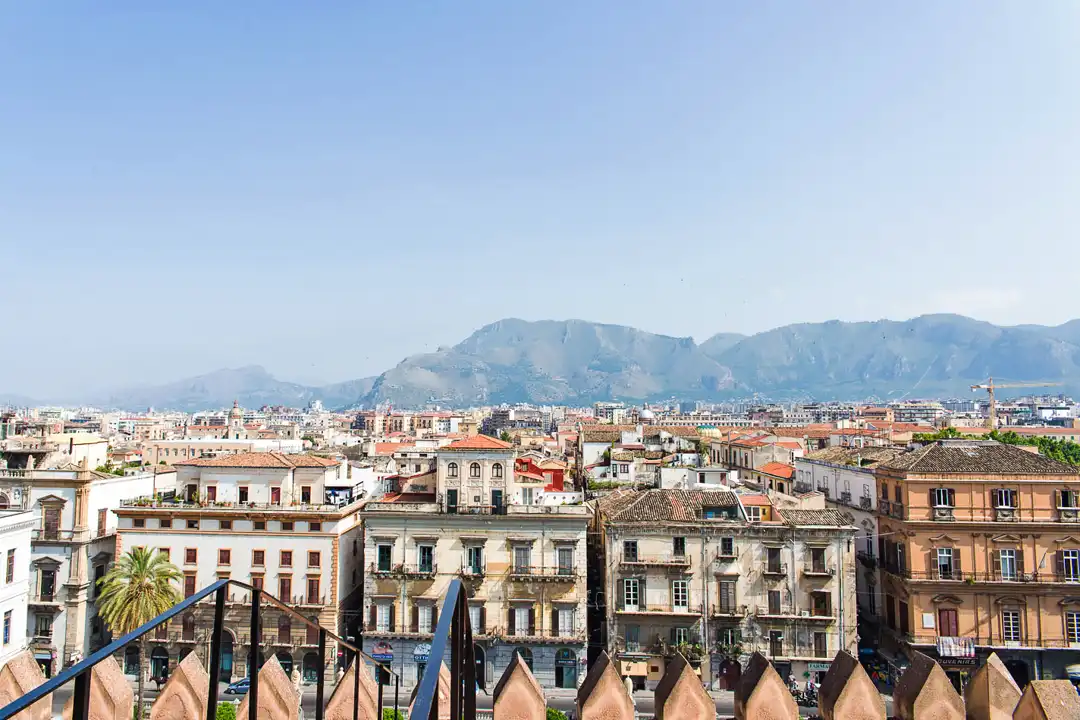
FAQ
1. Is Sicily safe for tourists?
Yes, overall, Sicily is safe for tourists. As always, exercise normal precautions as you would in any tourist destination.
2. Do I need a visa to visit Sicily?
That depends on where you are from. If you are from the EU, you don’t need a visa, but if you come from elsewhere, you’ll need to meet certain entry requirements.
3. Are credit cards widely accepted in Sicily?
Most hotels and restaurants take credit cards, but smaller shops might prefer cash.
4. Do I need to pre-book attractions?
For popular sites, try to reserve in advance to skip the line.
5. Can I explore Sicily by bicycle?
Sicily is very bike-friend, road cycling, with lots of picturesque roads to explore. Just be prepared; it’s not flat!
Conclusion
Sicily is a place of stark juxtapositions.
While it is technically part of Italy, it often feels like its own place, with a history and culture all its own thanks to its thousand-plus years of complete and total domination by just about every other culture in the region.
As a result, Sicily is bursting with traditions that seemingly no other part of Italy has. .And, even in its uniqueness, Sicily remains deeply connected to the whole.
Its land, its food, its vibrant cities — it’s all a part of what makes Italy Italy.
If you’re craving a journey rich in history, flavor, and unforgettable beauty, Sicily offers an experience that stirs the soul and captures the senses.
